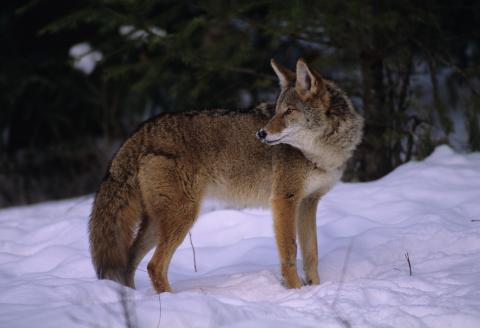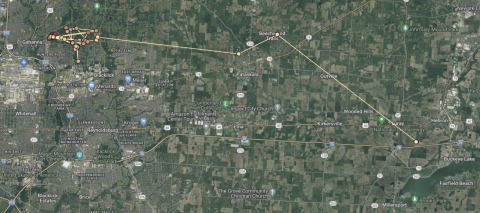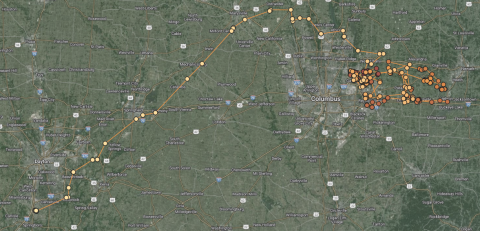General Behavior
Coyotes are monogamous breeders, and mated pairs tend to stay together on territories until one or both die. Breeding occurs during the winter season, and pups are born in April and May. Pups will stay in a den for about three weeks, and remain under close watch of one or both parents for several months. Coyotes stay together as a family unit until offspring disperse to establish territories of their own. Sometimes this dispersal happens during their first fall, at around 6 months of age, but sometimes they stay with their parents for up to two years and will help care for subsequent litters.
Coyotes can be active at all times of the day. Especially in urban spaces or areas with a strong human presence, coyotes will do most of their hunting during the night. However, it is not at all unusual to encounter a coyote hunting, moving from one place to another, or patrolling their territory during the daylight hours. Because coyotes are so adaptive, they can shift the timing of important daily behaviors to both avoid threats (like people or harsh weather) and seek opportunities (like the daily behavior patterns of their prey).
Movement Behavior
The coyote is a territorial animal, and mated pairs will establish a space of their own and defend it from other individuals. Solitary coyotes that are not able to establish territories are known as transients and will often cover great distances finding resources and avoiding defensive, territorial coyotes. Transients may be juveniles, subadults, or adults that have lost their mate and territory, and transient coyotes often have low survival rates because of their heightened movement. These transient individuals are important when considering management of coyotes. Hunters and nuisance trappers often notice that they remove coyotes from an area just for them to reappear shortly after - those are often transients that have found a newly-vacated territory due to the removed individuals.
Understanding the movement behavior of these transient animals is important for understanding how coyotes navigate the landscape and how quickly a potential territory will be discovered by a new animal. Our project has captured and put GPS collars on three subadult male coyotes to monitor their dispersal. Two of the animals have remained relatively local, with occasional forays that cover longer distances, while one individual has travelled all the way from Gahanna to Cincinnati in only a few months.



